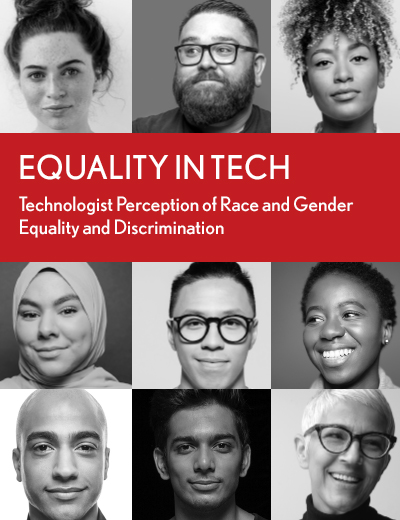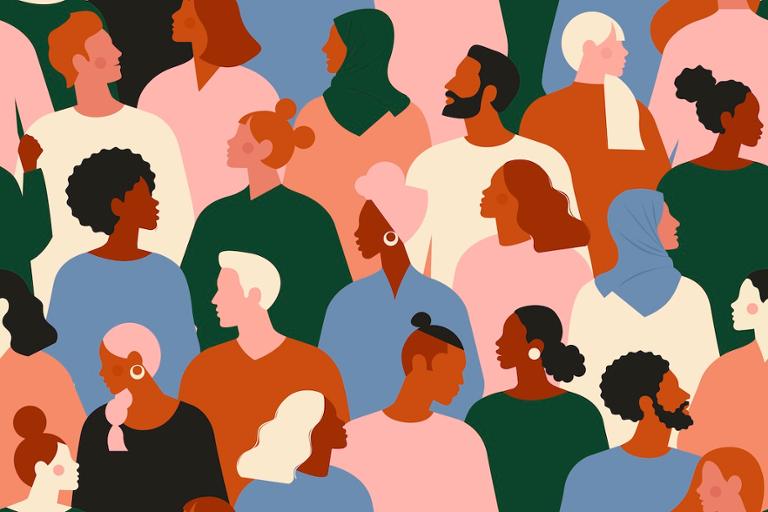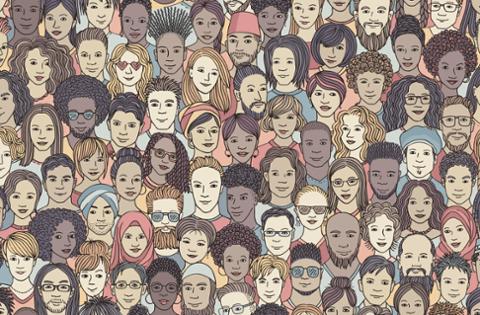As part of Dice’s new Equality in Tech Report, we asked more than 9,000 technologists whether they’d experienced or witnessed discrimination during their careers. Their answers offer crucial insight into how racial and gender discrimination remain a problem for the technology industry.
Racial Discrimination in Tech
For the purposes of our report, we defined discrimination as the practice of letting a person's gender, race or skin color unfairly become a factor when deciding who receives a job, promotion, or other employment benefit. Discrimination is a form of social inequality.
More than half of Black technologist respondents (55 percent) believe that racial inequality occurs frequently or very frequently in the tech industry. This is the highest of any group in the survey, followed by Hispanic/Latino(a) respondents (39 percent), Asian/Pacific Islander respondents (31 percent), White respondents (30 percent) and Asian Indian respondents (22 percent).
When it comes to technologists who have experienced racial discrimination, Black respondents (48 percent) were also the most likely to have experienced racial discrimination than all other groups. This is followed by Hispanic/Latino(a) respondents (30 percent), Asian/Pacific Islander respondents (25 percent), Asian Indian Respondents (23 percent), and White respondents (9 percent).
While the data confirms that racial discrimination remains an issue for many different racial groups in the tech industry, the ways that technologists of different races encountered discrimination vary. For Asian/Pacific Islander respondents, discrimination was most commonly witnessed in lack of promotional opportunities (32 percent), leadership opportunities (32 percent) and hiring (31 percent). For Asian Indian respondents, discrimination most impacted leadership opportunities (32 percent) and promotional opportunities (31 percent).

Equality in Tech Report
Access now. No contact information and form submission required for access.
Hispanic/Latino(a) respondents stated that they’ve predominantly witnessed discrimination in hiring (35 percent), salary and benefits (32 percent), promotional opportunities (32 percent) and leadership opportunities (32 percent). Black respondents were more likely to have witnessed all types of racial discrimination at a significantly higher level than all groups, with leadership opportunities (51 percent) and salary and benefits (50 percent) being the most common forms. Meanwhile, White respondents stated that they’ve witnessed discrimination at significantly lower rates than all other groups, with hiring (23 percent) as the most common response.
Beyond calls for racial equality in the workplace, reports find that having a diverse workforce makes notable improvements in innovation, morale and collaboration. Diverse organizations are 1.7 times more likely to be an innovation leader in their market. A recent McKinsey study found that, in 2019, businesses in the top quartile for ethnic diversity outperformed those in the fourth quartile (i.e., low diversity) by 36 percent in profitability, up from 33 percent in 2017.
According to our data, a majority of technologists of all demographic groups believe that a diverse workforce improves company morale, innovation and collaboration. Despite that trend, though, a smaller number of respondents still don't believe that diversity leads to improvements. Companies clearly have some work when it comes to educating all employees in the benefits of a diverse workplace; by doing so, they may be able to make progress toward eliminating racial discrimination within their organizations.
Gender Discrimination in Tech
Gender discrimination, also known as sexual discrimination, is any action that specifically denies opportunities, privileges, or rewards to a person (or a group) because of gender.
Women are vastly more likely to believe that gender inequality occurs in the tech industry. In fact, 58 percent of technologist respondents who identified as women stated they believe discrimination occurs frequently or very frequently, compared to 31 percent of men.
When respondents were asked if they have experienced gender discrimination in the tech workplace, there’s an even larger contrast between those identifying as women and those identifying as men. Specifically, more than half of women respondents (57 percent) say that they have experienced some form of gender discrimination, drastically outnumbering the number of respondents identifying as men who said the same (10 percent).
When it comes to the types of discrimination witnessed in the tech industry, the data reveals significant differences between men and women. More than half of women respondents (53 percent) stated that they’ve witnessed discrimination in their salary or benefits, compared to only a quarter of men respondents who said the same (24 percent).
Discrimination is also perceived as a factor when it comes to opportunities for career advancement. Specifically, 47 percent of women respondents said they’ve witnessed discrimination with leadership opportunities, 45 percent with promotional opportunities and 32 percent with project opportunities – more than double each respective response from male respondents. In an especially concerning development, 48 percent of women respondents said they’ve witnessed discrimination with regard to their technical abilities (in contrast, 24 percent of men respondents said the same). When it comes to technical careers, the perception that you lack tech skills can easily prevent you from obtaining vital jobs and promotions.
Women and men generally agree that having a diverse workforce improves a company in myriad ways. For example, a majority of women and men believe that a diverse workforce improves morale (72 percent of women, 57 percent of men), innovation (71 percent of women, 57 percent of men) and collaboration (71 percent of women, 56 percent of men). Additionally, 45 percent of women and 34 percent of men believe that having a diverse workforce improves company profits.
The perception of diversity’s positive impact on profits is supported by hard data. One Gartner study found that inclusive teams outperformed “gender-homogeneous, less inclusive teams” by an average of 50 percent; it also predicted that, over the next few years, 75 percent of organizations “with frontline decision-making teams reflecting a diverse and inclusive culture” will exceed their financial targets.
Some of the nation’s biggest tech companies also believe strongly in this idea that diversity pays a real dividend when it comes to innovation and profits. For example, Apple has attributed much of its success to the inclusive nature of its teams. “Our recipe for success is simple,” the company wrote in one court filing. “Hire the best people, from the most diverse backgrounds. They will solve the most challenging technological problems. They will find new ways to connect to the broadest population and new ways to provide the best customer experience.”
The benefits go beyond dollars and cents, though. Companies that embrace diversity and inclusion position themselves as brands that customers, employees, and job applicants all want to be associated with. Studies have shown that younger job-seekers, for instance, actively seek out companies that have robust diversity initiatives; in other words, making DE&I a priority today could ensure the strongest possible talent pipeline tomorrow.
While businesses stand to benefit from increased diversity, equity and inclusion, our data showcasing both perceived and witnessed discrimination shows that there is much work to do in standardizing the hiring and encouraging the retention of a diverse workforce.
Read Dice’s new Equality in Tech Report for more vital insights into diversity, equality and inclusion in the technology world, and help us keep the conversation going by sharing the report with your friends, family and network.

Equality in Tech Report
Access now. No contact information and form submission required for access.



